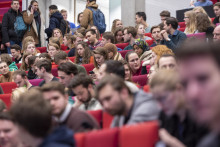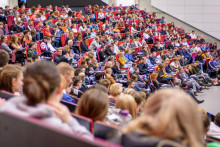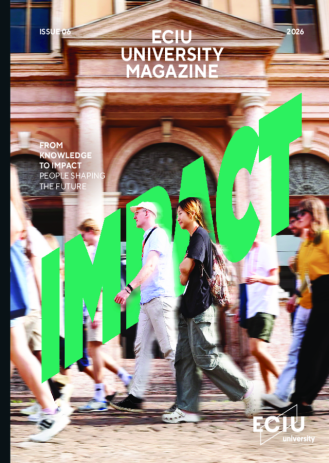Conversation ranged from the requisite `Hi, where are you from? What are you studying?' to serious discussions about the challenges of being an international student at the UT. Dutch master's student Wout van der Heijden, a Student Union board member in charge of internationalization, commented, `Everyone talks about internationalization at the UT, but not much action is taken.' According to Van der Heijden, there is no real policy where extra-curricular activities are concerned. He explained that clubs are not really prepared for international students, so one of his priorities is to encourage club websites in English to assure that information is available to all students at the UT, not just to Dutch students. He hopes to be able to offer a structured policy by spring 2005.
The second event of the International Weekend, the International Food Festival, began belatedly at almost 6:30 pm although some of the guests had commenced sampling the food much earlier. The venue emanated a mixture of aromas with students from thirteen countries displaying a sample of their cuisines. Kachi, a Japanese student doing an internship at the UT, had made sushi which disappeared rather quickly in the eager crowd; the same fate was met by tandoori chicken at the Indian stall.
At the stall from Switzerland, Isabelle Juchli, also on an internship at the UT, made rosti, a mashed paste primarily of potatoes and bacon. Alongside stood her Swiss friend of Vietnamese origin, Kim Bui, who happened to visit Juchli and decided to participate in the Food Festival on an impulse. ` I am so proud of him that he decided to cook us a little something (Vietnamese fried rice),' Juchli confided. The Chinese were conspicuous by their absence at the festival. Weiwei, one of the organizers, attributes that to a Chinese party that took place in Utrecht on the same evening. A guest who came looking for Indonesian food was also disappointed; there was no Indonesian stall. Agoes Moulja, an Indonesian AIO said that some of his friends were not even aware of the food festival.
Muzaffar Igamberdiev of Uzbekistan, also an organizer, confirmed that maybe distributing flyers was not enough publicity for the event. He also pondered organizing a national costume event for the next year where students would display their national attires and perform traditional dances, if they so desired.
Or maybe they would be interested in displaying their traditional arts, as did a Turkish stall at the food festival. Guests witnessed several demonstrations of Ebru Painting, a form of painting that is nearly four hundred years old, it is claimed. Ebru is the art of creating marble-like patterns by means of transferring the patterns prepared on the surface of water to paper. As the paint is dripped onto the surface of the water, initially it forms round shapes which soon expand, resembling the clouds in the sky. Mustafa, an AIO from the Turkish food stall, explains that only natural mineral or vegetable dyes, obtained by grinding soil or colorful plants into a powder, are used. After all these substances have been prepared, an Ebru artist needs instruments such as coarse horsehair brushes, pins, nails or combs to give shape to the dyes on the surface of the water.
The well attended Food Festival ultimately turned into a melting pot of cultures with guests exchanging notes on each other's norms and traditions. Serving the last piece of a heavenly Colombian desert called `postre de tres leches,' made from milk, cream and sugar, Blas, a Colombian student confessed, `I added more sugar than was necessary.' He has been participating in the International Food Festival for the past three years. `It is a good way to make new friends in a foreign country,' he says, thus lending fulfillment to one of the main goals of the International Weekend.
Deepa Talasila and Kristin Zimmerman








